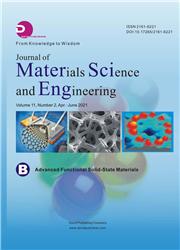Eco-friendly Green Biosynthesized Metallic Nanoparticles and Biotechnological Applications in Pharmaceuticals Sciences
引用次数: 0
Abstract
The next years will prove the importance of greensynthesis methods for MNPs and MONPs production because they are not only easy to execute, fast, and cheap but also less toxic and environmentally ecofriendly. Nanoparticle synthesis using microorganisms and plants by green synthesis technology is biologically safe, cost-effective, and environment-friendly. Plants and microorganisms have established the power to devour and accumulate inorganic metal ions from their neighboring niche. The biological entities are known to synthesize nanoparticles bothextra and intracellularly. The capability of a living system to utilize its intrinsic organic chemistry processes in remodeling inorganic metal ions into nanoparticles has opened up an undiscovered area of biochemical analysis. Metal nanoparticles (MNPs) and metal oxidenanoparticles (MONPs) are used in numerous fields. The new nano-based entities are being strongly generated and incorporated into everyday personal care products, cosmetics, medicines, drug delivery, and clothing toimpact industrial and manufacturing sectors, which means that nanomaterials commercialization and nanoassisted device will continuously grow. They can be prepared by many methods such as green synthesis and the conventional chemical synthesis methods. The green synthesis of nanoparticles (NPs) using living cells is a promising and novelty tool in bionanotechnology. Chemical and physical methods are used to synthesize NPs; however, biological methods are preferred due to its eco-friendly, clean, safe, cost effective, easy, and effective sources for high productivity and purity. Greensynthesis includes infinite accession to produce MNPs and MONPs with demanding properties. The structure–function relationships between nanomaterials and key information for life cycle evaluation lead to the production of high execution nanoscale materials that are gentle and environmentally friendly. Majority of plants have features as sustainable and renewable suppliers compared with microbes and enzymes, as they have the ability to pick up almost 75% of the light energy and transform it into chemical energy, contain chemicals like antioxidants and sugars, and play fundamental roles in the manufacture of nanoparticles. Plants considered the main factory for the green synthesis of MNPs and MONPs, and until now, different plant species have been used to study this, but the determined conditions should be taken into consideration to execute this preparation.绿色环保生物合成金属纳米粒子及其在制药科学中的应用
本文章由计算机程序翻译,如有差异,请以英文原文为准。
求助全文
约1分钟内获得全文
求助全文

 求助内容:
求助内容: 应助结果提醒方式:
应助结果提醒方式:


